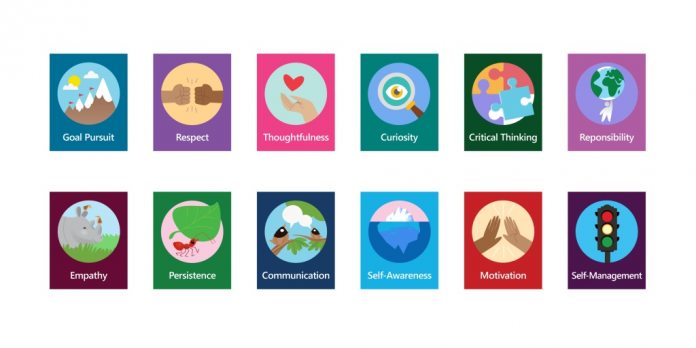In a blog post, Microsoft highlights the popularity of Microsoft Teams amongst students. Indeed, over 230,000 education institutions use Microsoft Teams to collaborate. Taking all the students and teachers across those institutions means millions tap into Teams for education. The growth of education users is moving along with a wider growth across Microsoft Teams. During the COVID-19 pandemic and subsequent lockdown measures, Microsoft Teams usage has increased by tens of millions of users. Back to the new features, the first is Praise Badges for Teams. These are SEL-specific (Social and Emotional Learning) Praise Badges that highlight students. They provide a way to give recognition to students who make small gains in learning. Next up is an SEL sticker pack in OneNote, Microsoft’s Office app that works closely with Microsoft Teams. Back in Teams, Microsoft is also rolling out a new Reflect tool the allows educator to connect with students and engage in SEL classes.
New Features
“Praise Badges in Microsoft Teams: Educators can use SEL-specific Praise Badges to recognize student social skills, grow emotional vocabulary, and give valuable recognition to the daily wins in their students’ learning. Praise Badges are based on the Big Five model, a well-known SEL framework recently used by the Organization for Economic Cooperation and Development (OECD) in their global assessment program. Praise Badges can be now used in chats and class team channels, with the new SEL-specific badges expected in late September. New SEL sticker pack for OneNote: Bring SEL to life in OneNote and OneNote Class Notebooks with the SEL Sticker pack, also developed through a human-centered design process and built around the Big Five framework. New Reflect tool in Microsoft Teams: The Reflect messaging extension in Teams helps educators connect with their students and implement SEL into the daily class flow—discussions, assignments, projects, and more—through quick check-in questions and polls. These check-ins are a simple way to guide students to reflect on and identify how they’re feeling, helping them lead with self-awareness as they participate in collaborative environments like Teams.”




